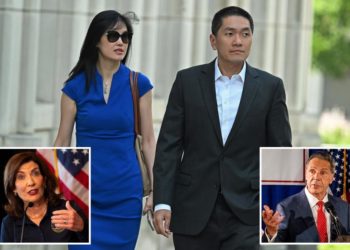What is Elon Musk’s net worth? Find out the wealth of the Tesla, SpaceX CEO
Elon Musk is the world's richest person.Alain Jocard/AFP via Getty ImagesElon Musk has a net worth of around $367 billion,...
Middle East updates: Israeli strikes on Gaza kill scores
Paris, Berlin and London have condemned what they called “threats” against the head of the United Nations’ nuclear watchdog after Tehran...
Depopulation Is Coming. Don’t Expect It to Solve Our Problems.
We’ve all heard that human overpopulation is a crisis. In 2017, Bill Nye warned us about the planet’s “people problem,”...
Trump Steps Up Pressure Campaign on Powell With Handwritten Note
President Trump stepped up his pressure on the Federal Reserve to lower borrowing costs on Monday, accusing its chair, Jerome...
Even Tony Hawk is nostalgic for Tony Hawk, hears your THUG remake wishes
Tony Hawk’s been skating professionally for more than 40 years, and he doesn’t mind his fans being nostalgic for earlier...
Senate races toward final vote on Trump’s megabill after weekend of debate, drama
The Senate is plowing ahead toward a final vote on President Donald Trump’s sweeping tax and immigration bill, as Republicans...
Chilean Comic Fabrizio Copano To Unveil First English-Language Special ‘From The Future’ In July
EXCLUSIVE: Chilean comedian Fabrizio Copano is set to release his first English-language special, From the Future, exclusively through 800 Pound...
No. 1 Aryna Sabalenka not interested in best-of-five-set matches in women’s tennis
Top-ranked Aryna Sabalenka wouldn’t want women’s tennis to move to best-of-five-set matches at Grand Slam tournaments — like the men...
Wannabe Firefighter, 20, ID’d as Man Who Lured Idaho Firefighters to Their Death
Police have identified Wess Roley as the sniper who allegedly set a wooded area in Idaho ablaze to lure firefighters...
Dem Rep. Ritchie Torres shreds Mamdani on failure to condemn ‘intifada’ language
NEWYou can now listen to Fox News articles! Rep. Ritchie Torres, D-N.Y., blasted Democratic New York City mayoral candidate Zohran...

















